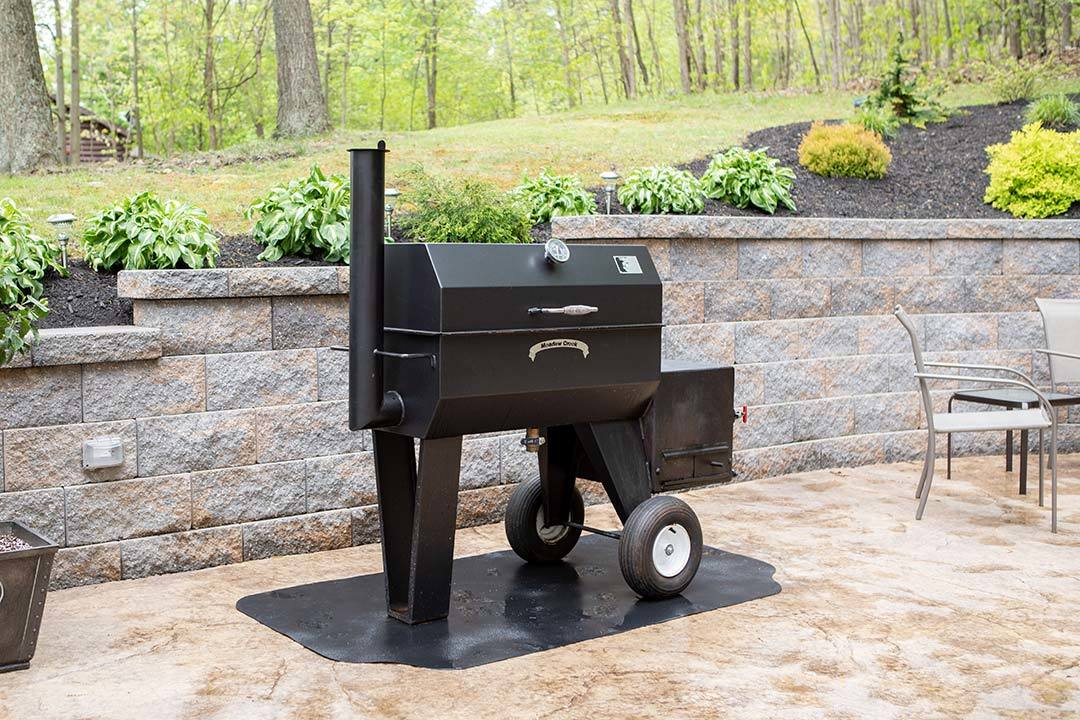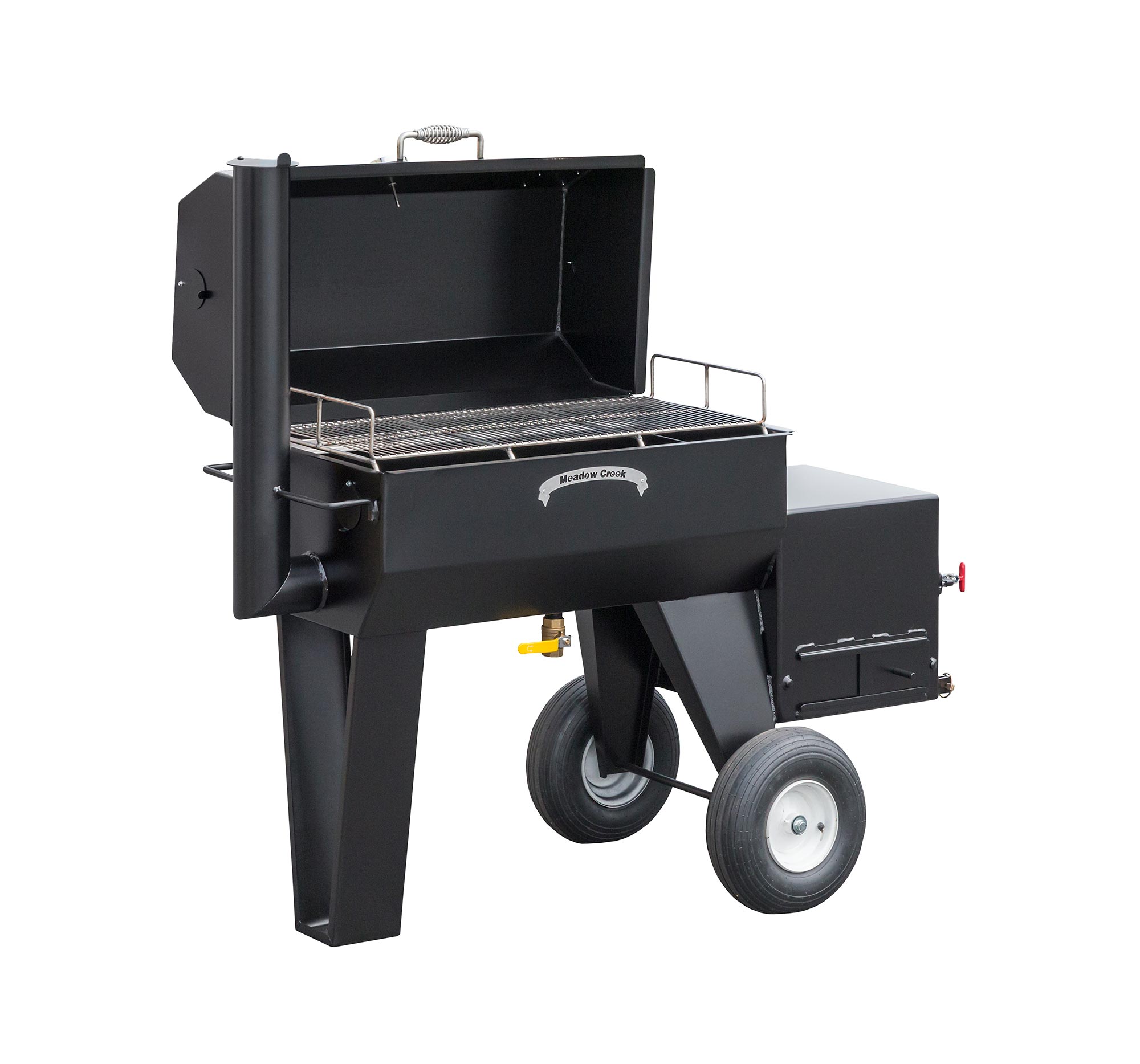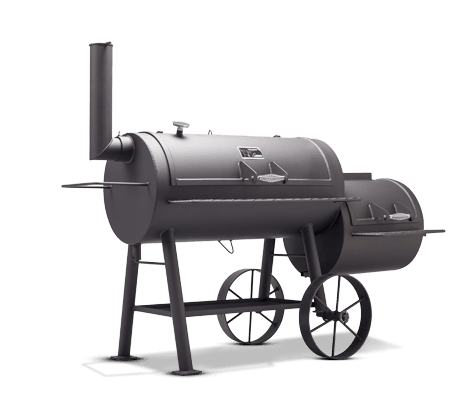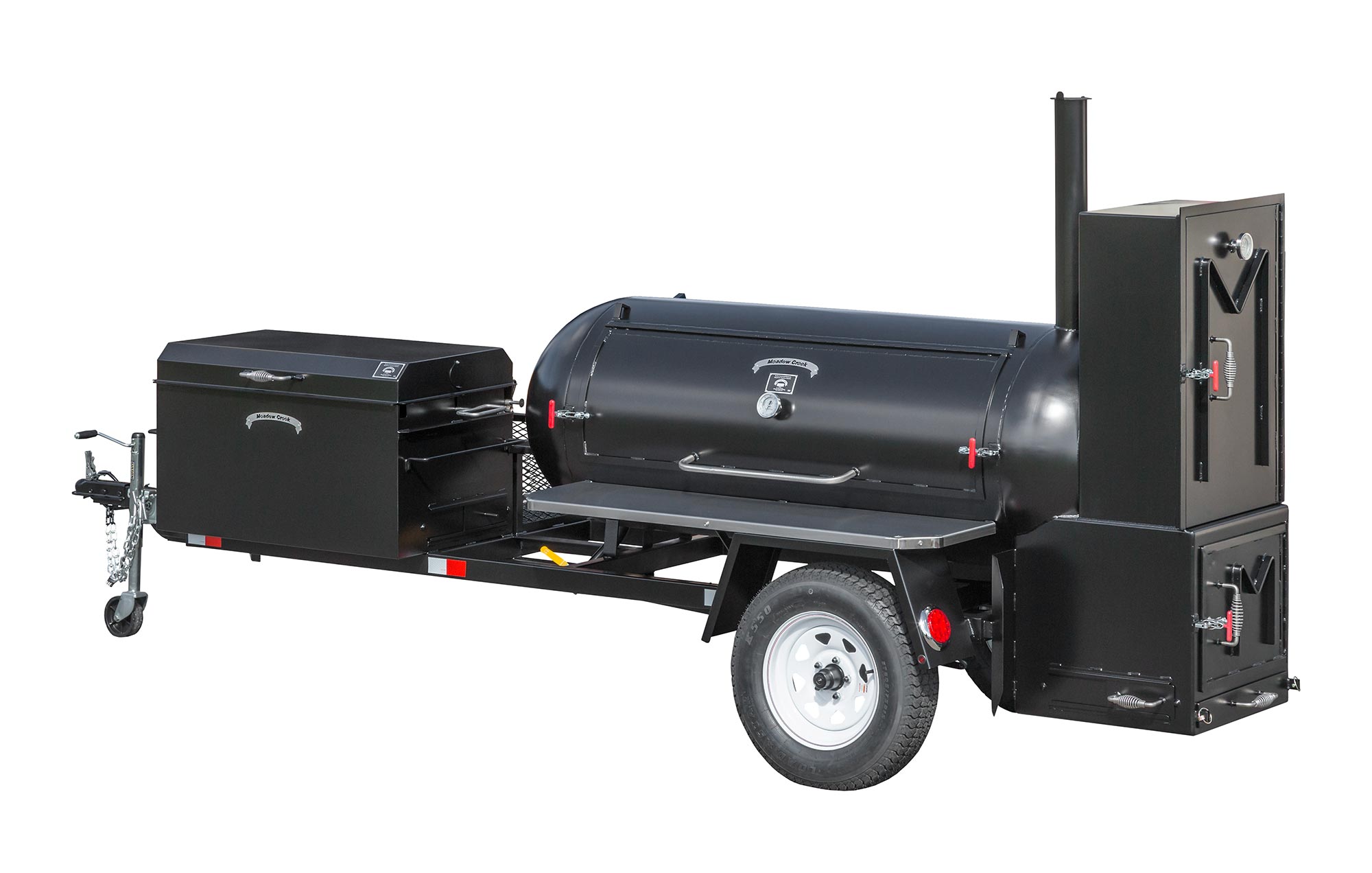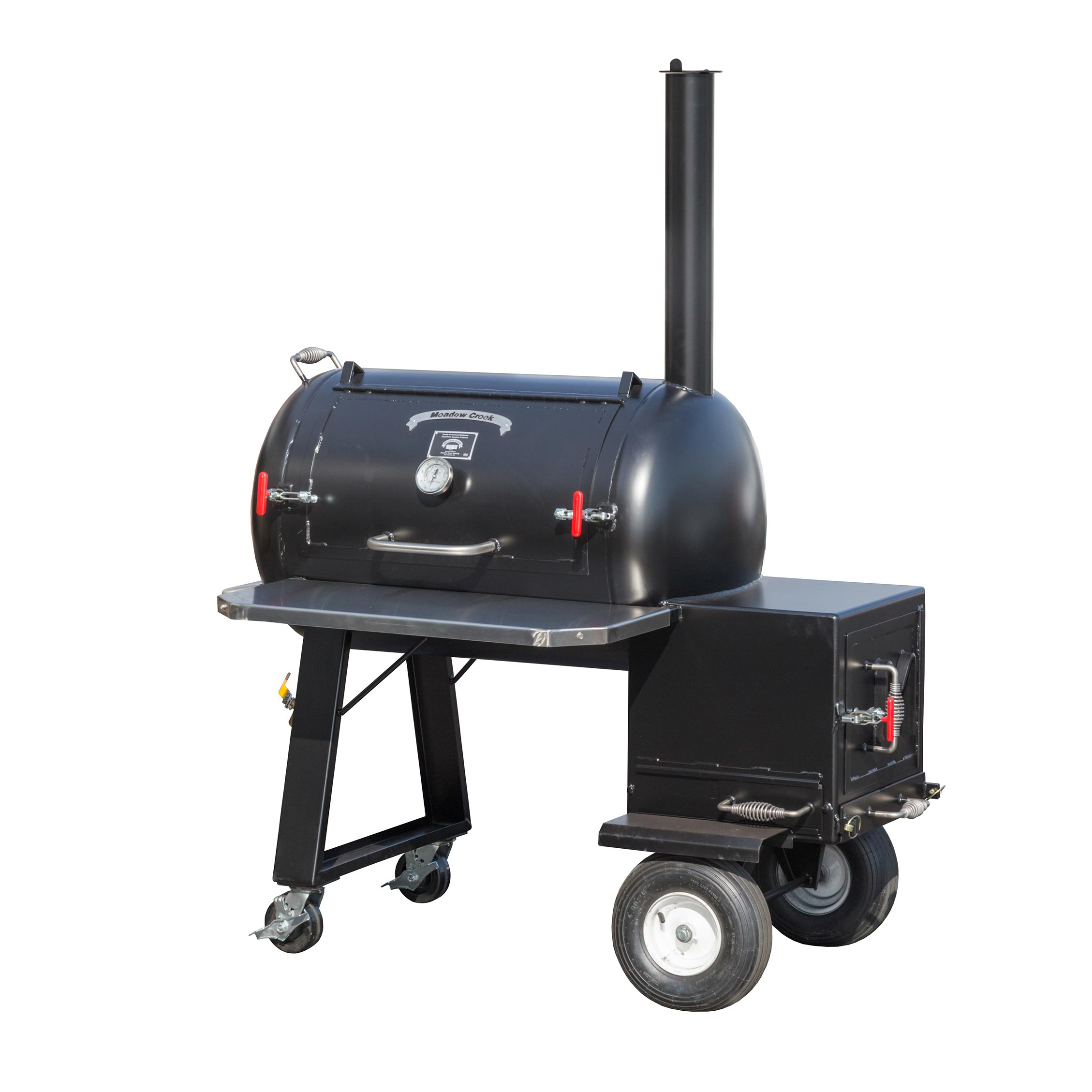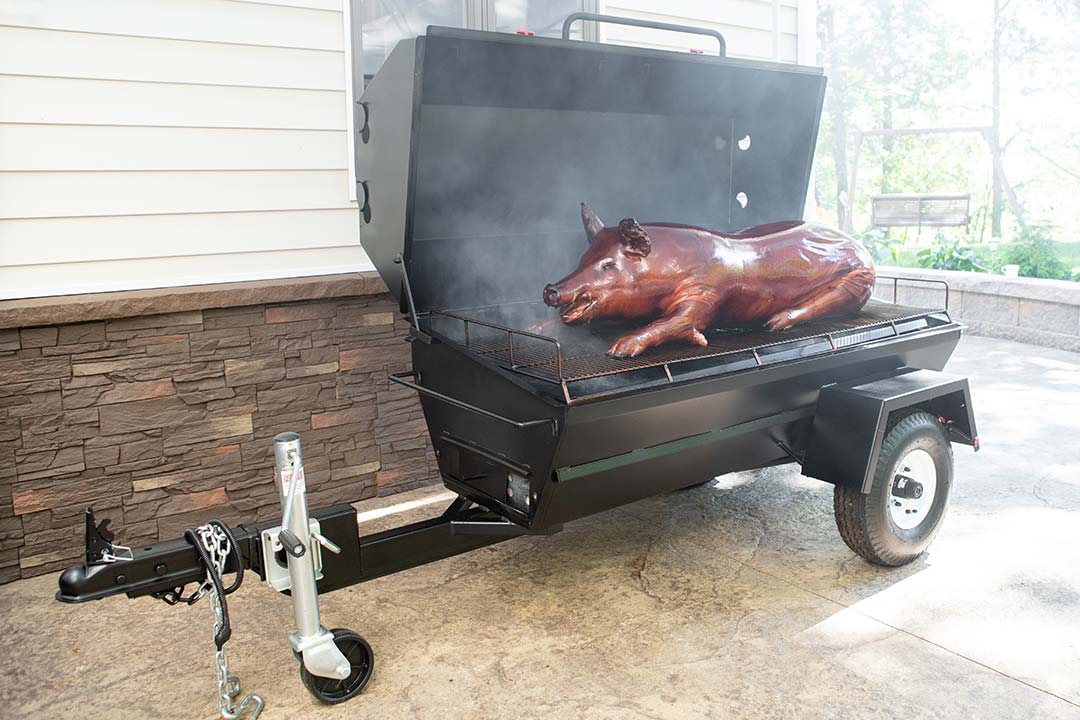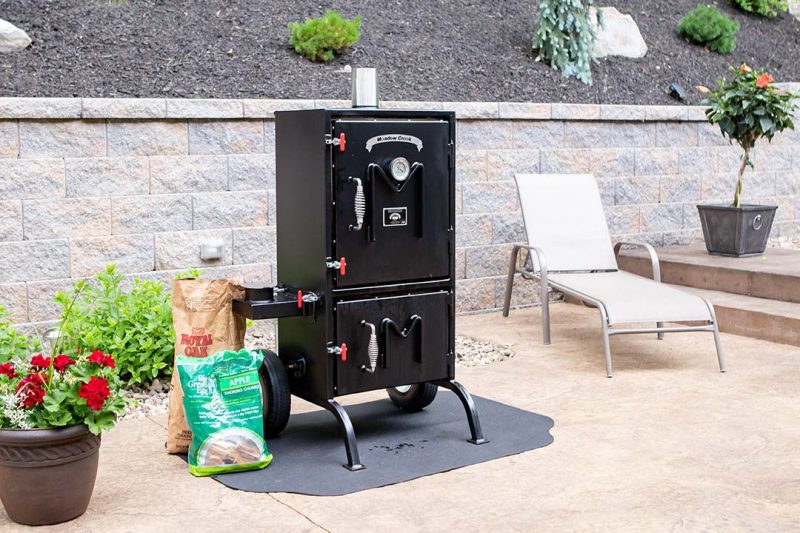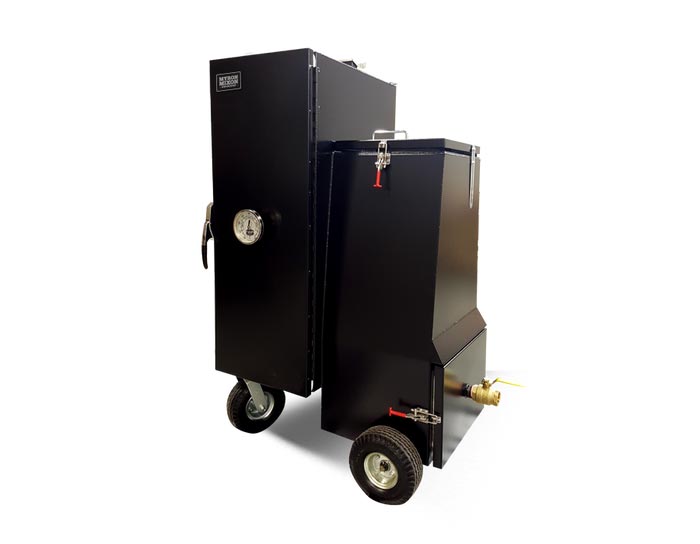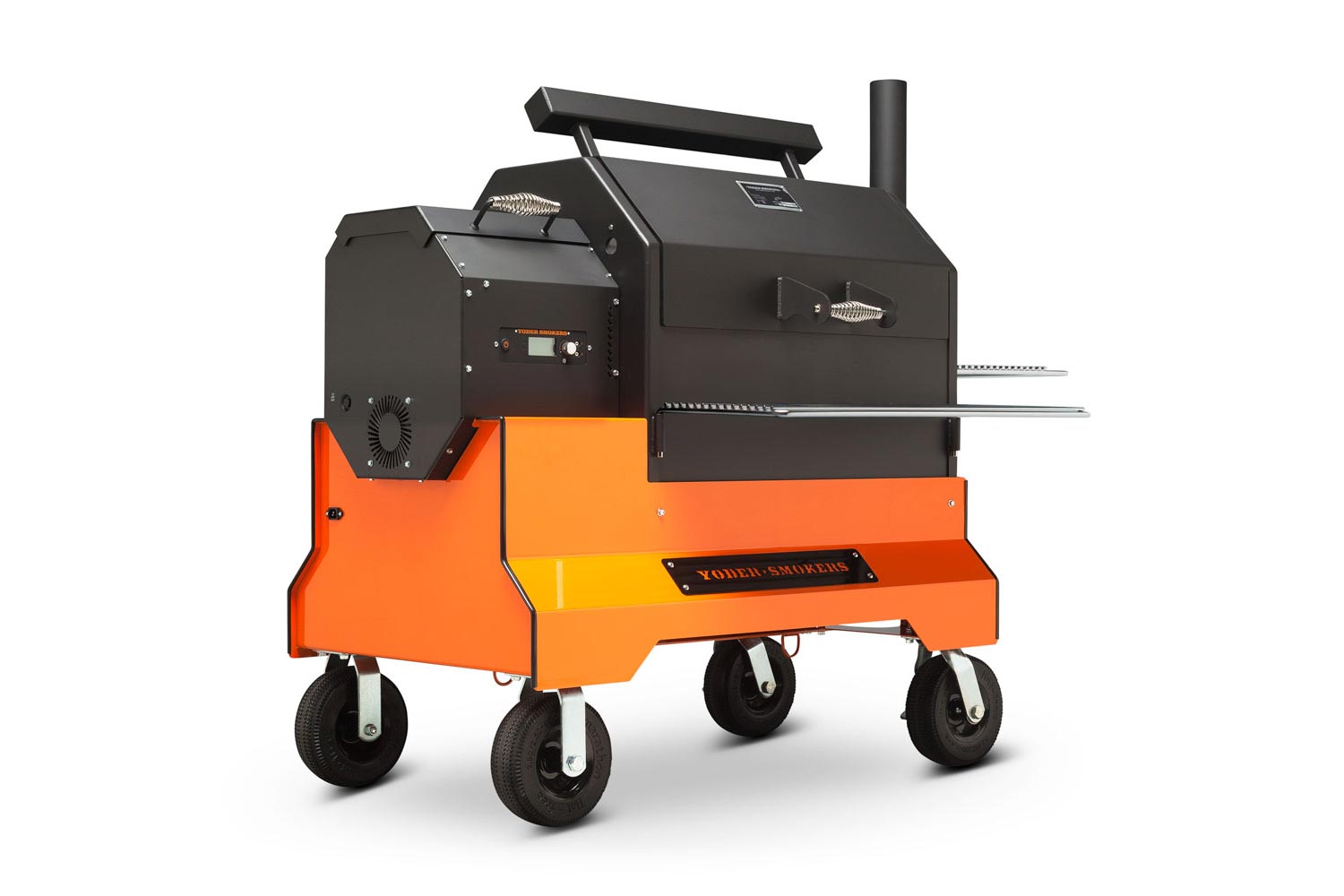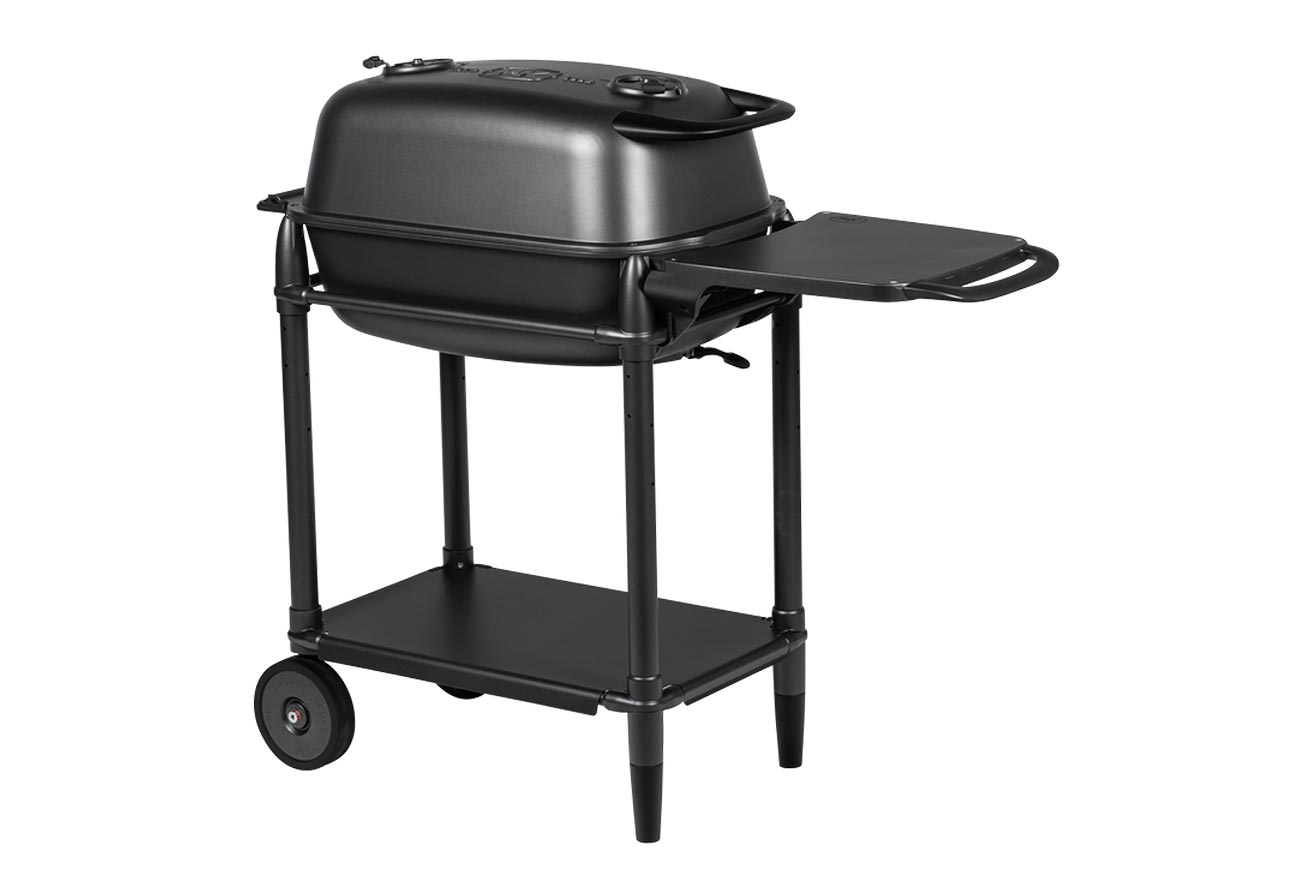Common Types of BBQ Smokers
What Are Common Types of BBQ Smokers?
Out of the many different types of BBQ smokes, which kind should you use?
A lot of it depends on preference, but the actual cooking results change too depending on the type of smoker you are using. Here is a general overview of the different types of barbecue cookers available and how they work.
Below is an overview of 6 different common types of BBQ smokers:
Offset Smokers
One of the most common types of BBQ smokers is offset smokers. These smokers have a box specifically dedicated for the fire and smoke. Since the food and the firebox are in separate chambers, the fire is never in direct contact with the food.
Offset smokers primarily come in two styles:
Cross-Flow Offset Smokers
Cross-flow style offset smokers tend to be less expensive, but if purchased from a well-known and reliable manufacturer they do a fine job. These units cook with l heat and smoke exiting the firebox and crossing over the meat, then exiting out a chimney on the opposite side.
Better quality cross-flow offset smokers use a diffuser. A diffuser is a tube or box that runs the length of the cooking chamber that the heat and smoker must pass through. The diffuser has holes that allow the smoke and heat to infuse the meat in the cooking chamber while keeping the heat evenly distributed.
Reverse-Flow Offset Smokers
Reverse-flow offset smokers are most often used by BBQ pitmasters and caterers. The technology is the same as the cross-flow except for one important aspect; when the heat and the smoke exit the offset firebox, it travels under a fully sealed drip pan to the nose (opposite end) of the smoker.
There is an opening in the drip pan at the nose of the smoker allowing the heat and smoke to reverse and come back over the food and exit the chimney.
The heat and the smoke traveling under the drip pan heats up the drip pan so that when the juices drip off the meat they vaporize on the pan, permeate the meat with delicious flavor, and provide radiant heat for cooking. When the heat and the smoke reverse is when the meat receives its smoke and the rest of the heat needed for cooking.
Because of this technology, reverse-flow smokers provide a well-balanced cook. Additionally, because of the offset firebox, the pitmaster can add more wood or charcoal as needed or mix different woods to provide a unique flavor profile.
Convection Roasters
Convection cookers usually have the fire within the cooking chamber. Typically they have a drip pan between the fire and the cooking grate to provide "indirect heat”. With convection roasters you typically have to add your fuel at the beginning off the cook then "set it and forget it" unless it has some kind of pullout that allows you to get to the fire without disassembling the cooker.
The cooking process is a convection cycle where the smoke and the heat travels up and around the drip pan then exits out the hood vents. Usually the fire in these units is a combination of a lot of charcoal and some wood. With convection BBQ cookers can't manipulate the wood or fire once the cooking process starts.
Upright Smokers
Upright BBQ smokers, such as this box smoker from Meadow Creek, have become the new “rage”. This common type of smoker has a place in just about all segments of the BBQ industry. They work well in the backyard, restaurants, catering, and competing. The one drawback is they usually are too small to cook a pig. The better smokers are well insulated and efficient, using less fuel and requiring virtually no fire maintenance. Where the fire and smoke are generated varies by manufacturer.
Gravity-Feed Charcoal Smokers
Gravity-feed smokers are designed to “meter” out the required charcoal for the desired cooking temperature. The charcoal is loaded into a chute where it drops down into a firebox. Most gravity-feed smokers are well insulated, so they are very efficient. On average, these units will burn about 1 pound of charcoal per hour.
To browse a variety of gravity feed smokers from Myron Mixon you can click here:
Pellet Smokers
Some people refer to these pellet cookers as grills, however, they are smokers. Grilling is better done on something else. The fuel source is a pellet that is approximately 1” long by 1/4" thick. The pellets are delivered to a burn pot in the bottom of the smoker supplying indirect heat. Some complain that the pellets do not generate enough smoke for their taste, but this is mostly dependent on the smoker selected.
Gas and Charcoal Grills
Gas and charcoal grills are primarily for grilling but with slight modifications they can easily be turned into smokers. You must utilize two zone cooking (also known as indirect) method. The indirect cooking method is simply building the fire on one side of the grill and placing the meat on the other while introducing a smoking source. On a gas grill, turn on a burner or two and leave the rest off. On a charcoal grill just build the fire to one side.
When this method is done properly you can achieve results very close to the delicious smoked meats that a traditional smoker produces.
Check Out Our Guide to Smoking With a Gas Grill
Ready to Pick Out a BBQ Smoker?
Visit Us
Location:
136 N Pine St, Wendell, NC 27591
Store Hours:
Tuesday–Friday: 10 am – 5 pm
Saturday: 10 am – 4 pm
Sunday and Monday: Closed
Store Number: 919-366-5252
